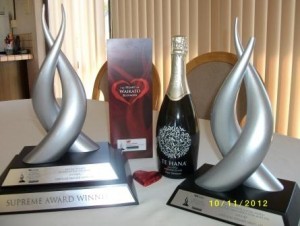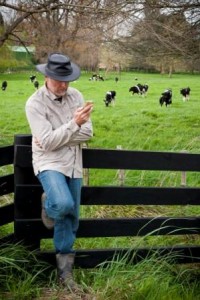 Congratulations to Waikato-based beef processor Greenlea Premier Meats, which scooped up the Supreme Award in the 2012 Westpac Waikato Business Excellence Awards, after winning the Tompkins Wake award for businesses employing more than 50 people.
Congratulations to Waikato-based beef processor Greenlea Premier Meats, which scooped up the Supreme Award in the 2012 Westpac Waikato Business Excellence Awards, after winning the Tompkins Wake award for businesses employing more than 50 people.
Greenlea is a family-owned business that has grown over the last 20 years from humble beginnings to become a significant player in the New Zealand meat industry. It employs 370 staff at two beef processing plants in Hamilton and Morrinsville, with a turnover of more than $260 million and growing.
The company, which celebrates its 20th anniversary this season, procures over 185,000 prime steers, heifers, manufacturing bulls and cows each year and also, in a new move last season, now also collects bobby calves. The product range includes 425 different specifications, with around 200 in production at any one time, and supplies over 40 countries with New Zealand beef.
Introducing Marel Streamline boning-room technology from Europe to its Hamilton prime-boning room in 2009 and its Morrinsville plant in 2010 was a first for a New Zealand meat company and using this technology for hot-boned beef a first, globally.
The modern and ergonomically designed system has helped to reduce the hard manual work found in traditional beef boning rooms, which means less strain injuries for staff, explains managing director Tony Egan.
The computer-based tracking system provides for more efficient monitoring of yields, quality, throughput and orders at the boning room floor. Supervisors now have the ability to provide data-based feedback to staff on their performance. The company also uses a locally developed tailor-made freezing technology.
According to Egan, Greenlea’s international reputation for reliable service and consistent high quality product has been a key factor in making it the processor of choice in many markets not only in manufacturing beef, but also for high quality prime beef table cuts.
He has a simple answer to how this has all been achieved. “Quite simply, it’s the people that make our company so special and our success comes from creating a great team and encouraging them to do great things.”
This article has appeared in Food NZ magazine (February/March 2013) and is reproduced here with permission.



